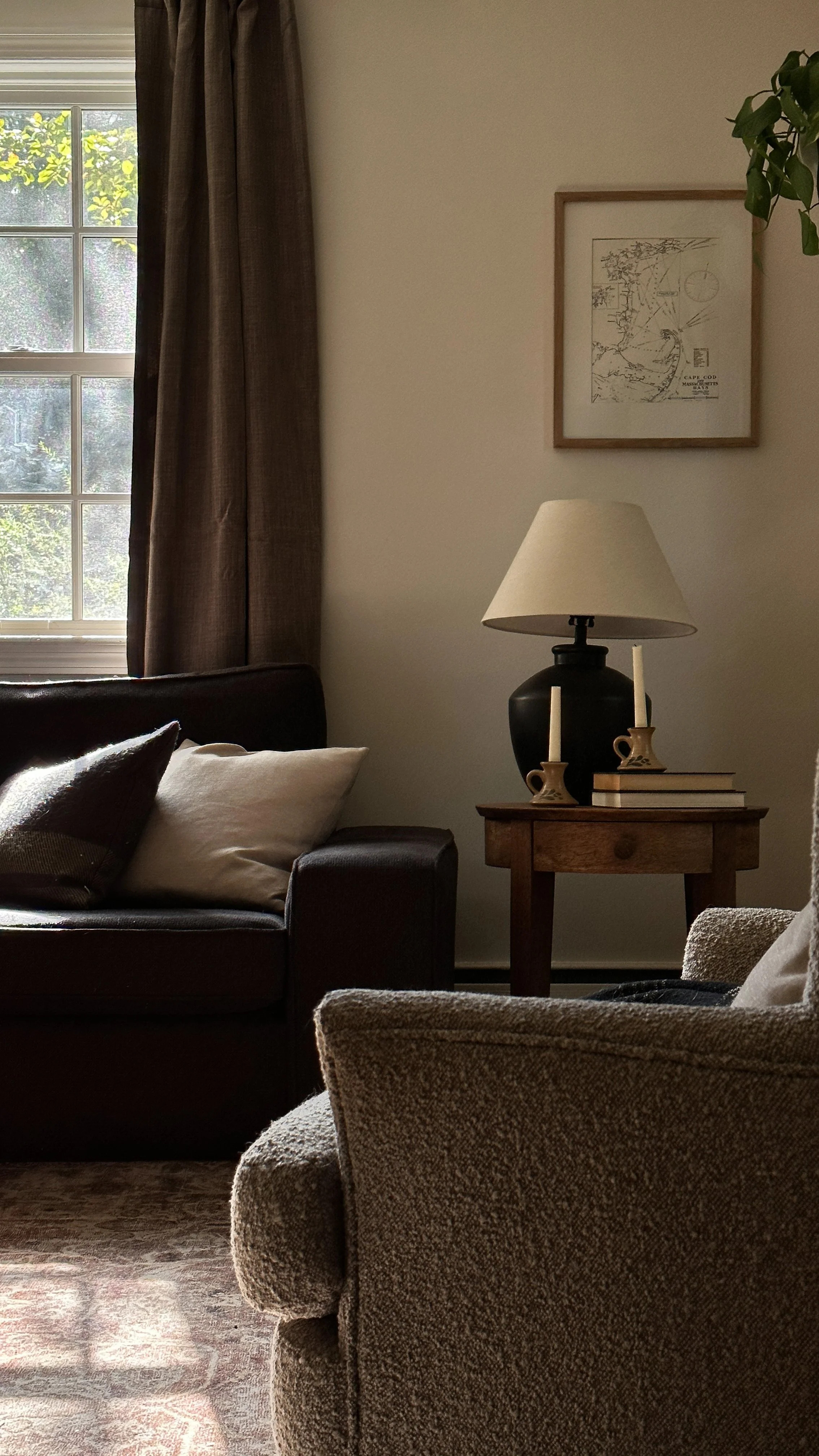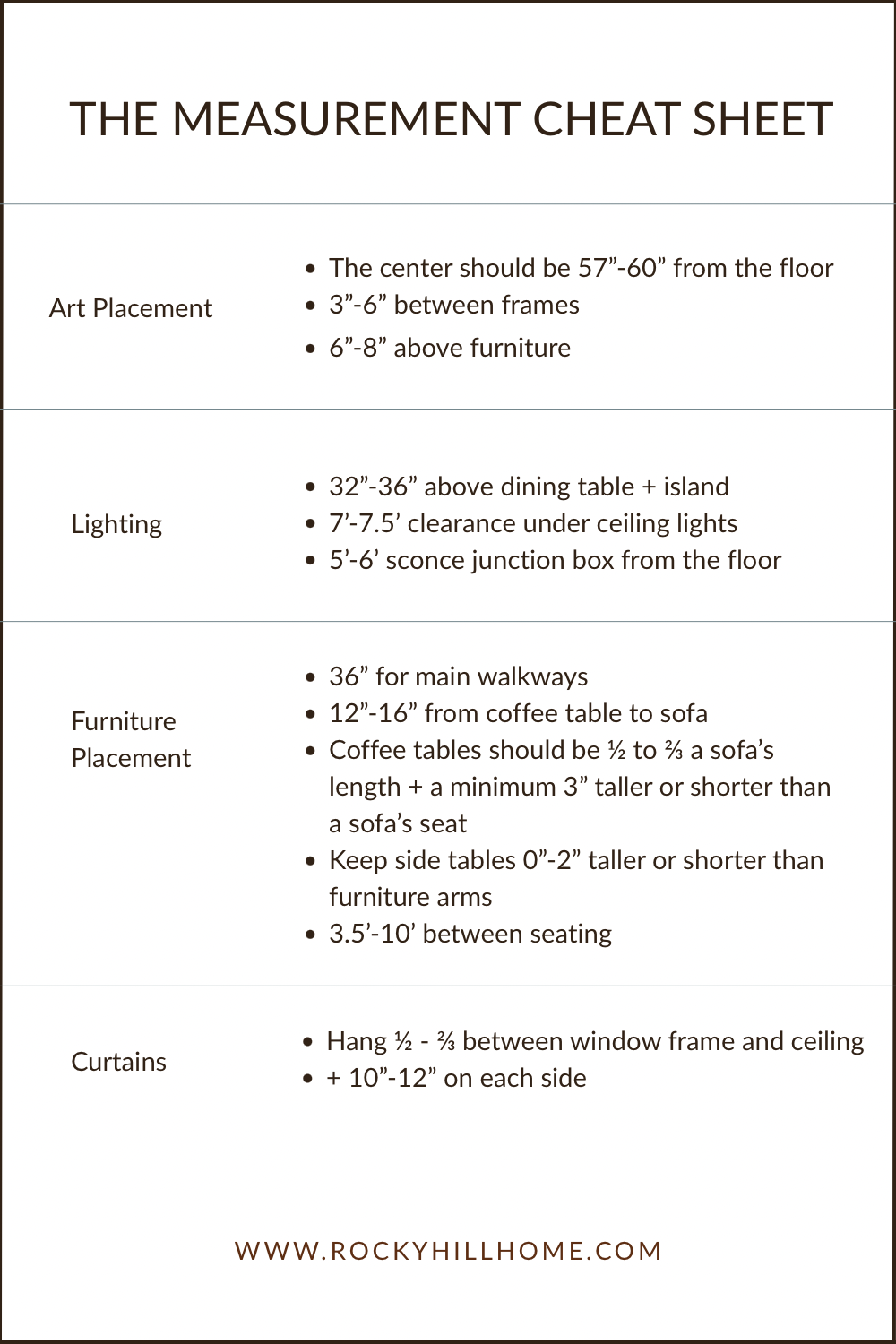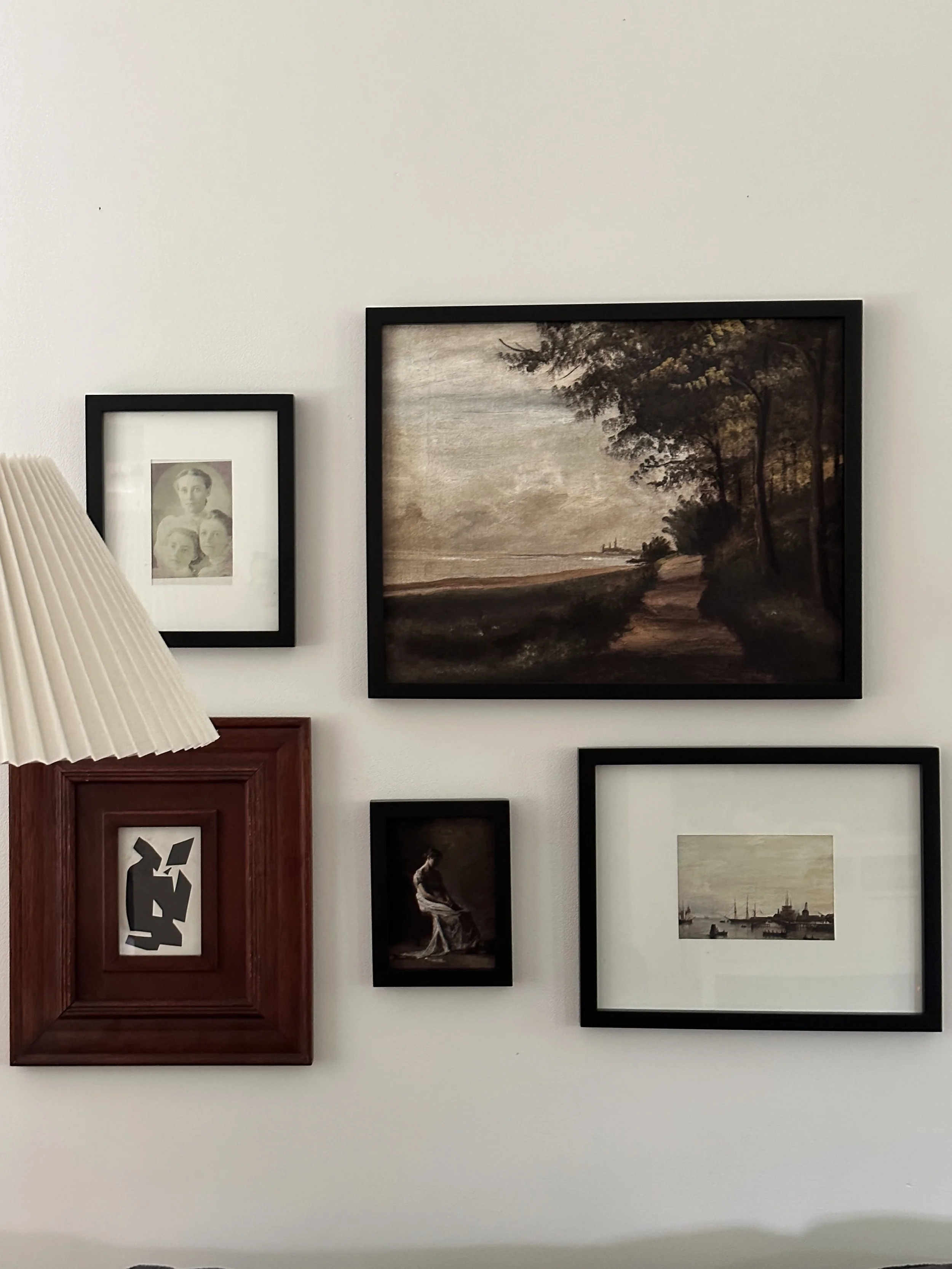A Beginner’s Guide to Home Styling: Simple Rules for a Polished Look
This article contains affiliate links.
Do you ever look around your home and wonder why it doesn’t look like your inspiration photos, no matter how much you rearrange things? You might have all the right pieces, but without a few simple styling rules, it’s hard to make everything come together. In this beginner’s guide, you’ll find a collection of the easy-to-follow formulas I’ve shared in the past, as well as general styling tips you can implement to finally create a home that feels polished, cozy, and pulled together.
1. Start with a Clear Vision
Before you begin, take a moment to decide what you want the space to feel like. Do you want it to feel calm and cozy, or bright and energetic? Having a clear mood in mind helps you make intentional choices about color, texture, and scale.
If you’re not sure where to start, I always recommend creating a simple mood board or browsing Pinterest for inspiration that reflects your preferred style. Check out What Is My Decorating Style? 7 Questions to Help You Define Your Aesthetic for tips on clarifying your personal style and your home’s design direction.
2. Follow the Rule of Thirds
The rule of thirds is one of the simplest tricks for styling. Divide your surface visually into three sections and vary the height, texture, and shape of objects in each.
For example, when styling a coffee table, you can use one section for a tray, one for a stack of books, and one for a decorative object like a vase or bowl. This layout feels balanced but not overly symmetrical. I share some more simple coffee table styling formulas in Effortless Coffee Table Styling: 3 Formulas to Try Today as a helpful guide.
3. Layer with Texture and Height
A flat arrangement always looks unfinished. To create depth, mix materials (wood, glass, ceramic, linen) and vary the heights of your decor pieces. Place taller items—like candlesticks or vases—toward the back or center, and layer smaller objects around them.
For shelves, think of each shelf as its own vignette. Combine vertical elements like books or art with horizontal objects to keep the eye moving.
You’ll love this post: The Easiest Way to Style Open Shelves Without Overthinking It
4. Keep Your Color Palette Tight
One of the biggest beginner mistakes I see is using too many competing colors. To create a cohesive look, limit your palette to 3–4 colors and repeat them throughout the space.
If your room already has a dominant color in the walls, furniture, or rug, pull decor pieces that echo those tones. Don’t worry about matching exactly, using different shades of a color (ex. navy blue and french blue) creates depth in a space. Repetition is what makes your home feel intentional and styled, not random.
Related Post: How to Use a Whole House Color Palette for Seamless Flow
5. Use Decorative Books as Anchors
Books are one of my favorite tools for styling because they instantly add structure, height, and you most likely have a ton of them already. You’ll see books used in all of my styling formulas. Use hardcover design books to anchor smaller items, like candles, bowls, or beads, on coffee tables, nightstands, or shelves.
Throw off the book jackets, and they introduce subtle color and texture, especially when you mix linen, leather, or neutral fabric covers.
Read This Post: Styling a Console Table: 3 Foolproof Formulas for a Pulled-Together Look
6. Use Meaurements As Your Guide
In 3 Styling Mistakes That Make Your Home Feel Disjointed (And How to Fix Them in Minutes), I run down three common design mistakes that can be fixed using the right measurements. In fact, most design decisions you make can be guided by rules of measurement.
7. Add Something Organic
Every styled space needs something living, or at least something that feels alive. A small plant, a branch clipping, or a bowl of fresh fruit adds warmth and breaks up the predictability of man-made materials. Try to incorporate organic decor in every room of your home. It will make a huge difference.
8. Mix Old and New
A perfectly matched room can feel sterile. Blending vintage or collected items with newer pieces gives your home depth and character. Try pairing a clean-lined lamp with a vintage brass bowl, setting modern art above an antique console, or mixing vintage frames in with contemporary ones.
This mix makes your space feel personal and tells a story that’s uniquely yours.
9. Repeat Materials for Cohesion
As with color, to pull your styling together, repeat materials at least three times throughout the space. For example, if you use a woven basket in one corner, echo that natural texture with a jute rug and a rattan tray.
This creates a sense of rhythm that feels consistent without being too “matchy.”
10. Trust the Process
Styling is meant to evolve. As you live in your space, move things around, swap in seasonal accents, and let your style grow with you. The best interiors feel collected over time—not styled in a single afternoon.
When you start with these simple rules, you’ll build confidence with every vignette you create. Before long, you’ll walk into a room you styled and think, this feels right.
Styling Guides:
Cozy & Functional: Sectional Sofa Layouts for Small Living Rooms
Styling a Console Table: 3 Foolproof Formulas for a Pulled-Together Look
3 Styling Mistakes That Make Your Home Feel Disjointed (And How to Fix Them in Minutes)
The Cozy Bedroom Lighting Formula: Layering Sconces, Lamps & Overhead Lights
The Easiest Way to Style Open Shelves Without Overthinking It




